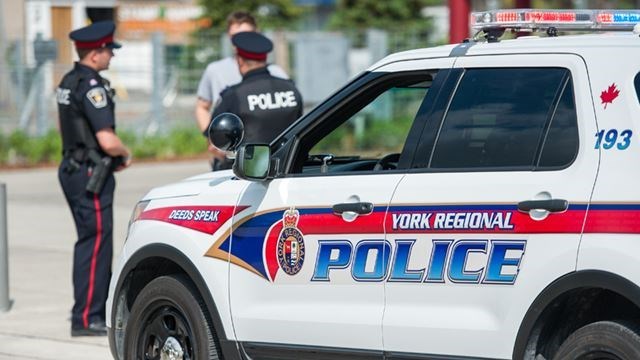Newly released data from York Regional Police shines a light on the demographics of suspects in incidents involving weapons.
Police had 421 use-of-force reports involving 324 people in 2023: about 144 subjects, or 45 per cent, were white; 87 subjects, or 27 per cent, were Black; 37 subjects, 11 per cent, were Middle Eastern; 33 subjects, 10 per cent, were East/Southeast Asian, 17 subjects, or five per cent, were Asian, five subjects, or one per cent, were Latino, and one was Indigenous. Police analyzed the data to determine which subjects carry around weapons.
“It is important to note that the subjects perceived to be white were up from 39 per cent in 2022, and our subjects perceived to be Black were down from 34 per cent in 2022,” Staff Sgt. Josh McCue.
The police force states it began working collaboratively with the Ontario Police College and the Ministry of the Solicitor General to improve on data validation procedures and transparency with respect to our organization’s application of force this year. This partnership is the first of its kind, placing York Regional Police in the position of accessing the organization’s use of force data directly from the Ministry of the Solicitor General after it has been reviewed and verified by Ministry personnel.
The data is a stark comparison to subjects involved with Toronto Police Service officers. About 1,244 members of the public were involved in use-of-force incidents. About 482 people (39 per cent) were Black, 442 subjects (36 per cent) were white, 104 subjects (nine per cent) were east/southeast Asian, 72 subjects (six per cent) were Middle Eastern, 49 subjects (four per cent) were Latino, 49 subjects (four per cent) were south Asian, and 26 subjects (two per cent) were Indigenous.
While there are more white subjects involved with YRP, police state that a higher number of Black subjects carry weapons. About 91 white subjects (63 per cent) were armed, 71 Black subjects were armed (82 per cent), 24 East and South East Asians were armed (73 per cent), 18 Middle Eastern subjects were armed (49 per cent), eight South Asian subjects were armed (47 per cent), one indigenous subject was armed and two Latino subjects were armed (40 per cent).
Chief Jim MacSween said the data in York Region is based on the officer’s perception of race at the time of the call.
“We can’t even verify if the numbers are completely accurate because after we have the interaction, we might validate that the perception might have been one thing, but the reality might have been something else,” said MacSween.
According to the 2021 Census, 55 per cent of York Region's population identifies as a visible minority: 44. 8 per cent Chinese; 20 per cent South Asian; 16.1 per cent other; 9.7 per cent West Asian; 5.1 per cent Black; 4.3 per cent Filipino.
Deputy Chief Cecile Hammond pointed out that not all the subjects referenced in the data live within the region.
“While we can provide the demographics and makeup of the community, a number of the subjects perhaps don’t reside in York Region,” said Hammond. “It may not provide an accurate reflection.”
Durham Regional Police Service has released its data as well. Officers used force in 237 incidents. About 145 subjects (61.2 per cent) were white, 52 subjects (22.4 per cent) were Black, 23 subjects (9.7 per cent) were labelled as others, eight subjects (3.8 per cent) were East/Southeast Asian, one subject (0.4 per cent) was Indigenous, one subject (0.4 per cent) was Latino, seven subjects (3.0 per cent) were Middle Eastern, six subjects (2.5 per cent) were South Asian and 16 subjects (6.8 per cent) were labelled as multiple race groups.
As most cases involve police arriving at a scene, MacSween said the collection of data may change as the categories broaden over time.
As a provision under the Anti-Racism Act, police services have been mandated to collect data on the perceived race of individuals involved in use-of-force incidents.



